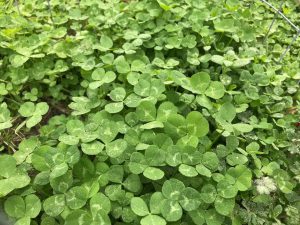I don’t know about you but I’m getting excited about planting cool season food plots! Now is the time to get those soil samples tested and start planning for this upcoming hunting season. Once we get our soil pH adjusted and our forages chosen, we need to turn our attention to weed management. There’s nothing more disappointing than growing weeds instead of what we planted.
A simple strategy is to start with a burn down treatment with a non-selective herbicide such as glyphosate. This is a safe and effective way to kill most everything growing in the food plot area. We want to apply the burn down treatment 2-4 weeks prior to planting. This will allow sufficient time for the herbicide to move into the plants and kill them.
Next step is preparing the seedbed. If the site is very weed infested, you may switch up these first two steps. Till first and wait a few weeks for new plants to emerge, then burn down weeds that emerge with a non-selective herbicide. Either way, we want a clean seedbed to plant into.
Next comes planting our desired forages. Remember that weed control becomes more difficult when we mix broadleaf plants with grasses. It’s not impossible however. Planting rate has a lot to do with weed control. If our planting rate is too low, we allow spaces for weeds to establish. Plant forages using the upper end of the seeding rate to help control weeds.
Follow up weed control options will depend on the planted forages, weeds growing and forage growth stage. We can use strategies such as mowing, selective herbicides and weed wiping with non-selective herbicides. When planting just clovers, you can refer to the following publication for chemical control options, https://edis.ifas.ufl.edu/publication/wg214. When planting small grains, 2,4-D and dicamba are good options for broadleaf weeds. These need to be applied when small grains have fully tillered but have not jointed. We get better weed control when we apply herbicides to younger weeds. Weed wiping is a great option when weeds are taller than the desired forage. Here’s a good publication on weed wiper technology and use – https://www.noble.org/globalassets/docs/ag/pubs/soils/nf-so-11-06.pdf.
For help identifying weeds and control strategies, contact your local county extension office.
- Killer Turkey Food Plot - January 31, 2025
- Common Wildlife Food Plot Mistakes - November 8, 2024
- Seasonality of Prescribed Burning Workshop - February 23, 2024

